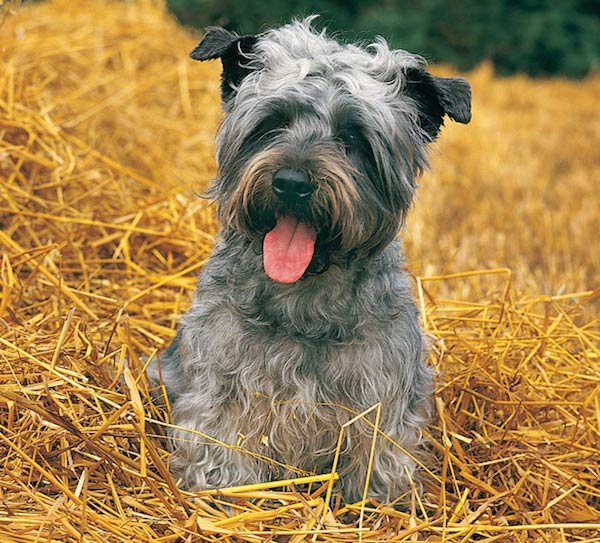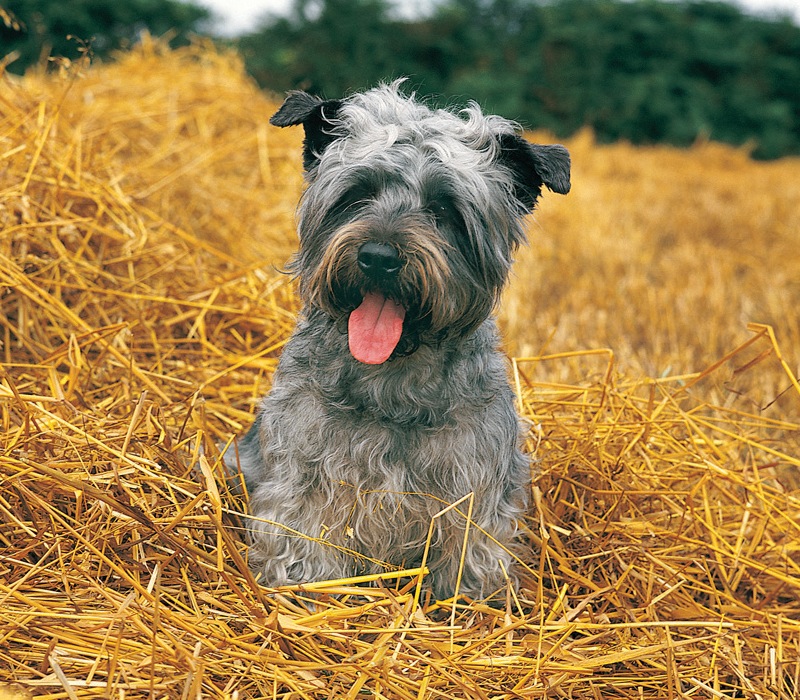Special to the AKC Gazette
Over the past several years, the Glen of Imaal Terrier has sometimes fallen prey to the dangerous idea that bigger is better. The standard calls for a dog who is “approximately 35 lbs,” with “bitches somewhat less,” but we are seeing dogs in the ring who are easily 20 to 45 percent larger than desirable.
Some judges have said that being oversized is not a disqualification in the breed, and they are correct. But can they imagine themselves pointing at an 18-pound Norwich Terrier, or a 60-pound Kerry Blue Terrier? Why reward a very large Glen who is no longer a “medium-sized working terrier”?
Perhaps it is the wording of the Glen of Imaal Terrier standard itself that judges find confusing. The standard says that a Glen “should always convey the appearance of maximum substance for size of dog.” Too often this is interpreted to mean that the most massive dog is correct, while failing to take into account our very important weight, height, and proportions clauses. A correct dog is 12½ to 14 inches at the highest point of the shoulders; is proportioned at 3:5 height to length (sternum to hip); and weighs in at approximately 35 pounds, with bitches being smaller.

The original Glen of Imaal Terriers for whom our standard was written were very different from the dogs we see in the show ring today. They had much more leg, giving them the ability to “move freely” as is desirable. They did not have the overdone bone and barrel-chests that are sometimes seen and mistaken for correct. Instead, they were, and still are, a versatile working terrier with the ability to cover rough terrain, kill vermin, or go to ground if needed. Glens are indeed a dwarf breed, but they should never appear “dwarfish,” with extremely short legs and a massive body. Balance is the key throughout our standard.
It is probably no coincidence that the 35-pound ideal size of a male Glen of Imaal Terrier is similar to the size of its most famous prey, the Irish badger. While Glens may or may not have worked on a turnspit, their work as badger dogs is well documented. In the early years after recognition by the Irish Kennel Club, Glens were required to earn a “Certificate of Dead Gameness” in order to receive a championship. At the trials, the dog was required to go underground following the scent of the badger through tunnels and into its den. They were then required to engage the quarry, and preferably drag it through the tunnels and out of its den. Only a balanced athlete with great agility can accomplish this task.
The Glen of Imaal Terrier Club of America is determined to keep Glens within the height and weight range described in our standard. To that end, Senior and Master Versatility awards can only be earned by dogs who have a Junior or higher Earthdog title. A dog with correct length of leg, mass of body, and length of back should be able to fit through a nine-inch tunnel, negotiate right-angle turns, and reach the end within a short amount of time. Master Earthdog tunnels with their squeeze-chutes are probably too small for the average Glen, but the lower levels are achievable.
So, without a scale, how do you determine if a Glen is too large? You must familiarize yourself with the standard, attend judges’ education events, and put your hands on enough Glens to become familiar with correct size and proportions. When all else fails, think of the Earthdog tunnel: If the round dog can’t fit through the square hole, he or she is just too big.
To learn more about the Glen of Imaal Terrier, check out the breed pages, and visit the website of the Glen of Imaal Terrier Club of America.
Dr. Mary McDaniel is Judges’ Education Chair for the Glen of Imaal Terrier Club of America.


